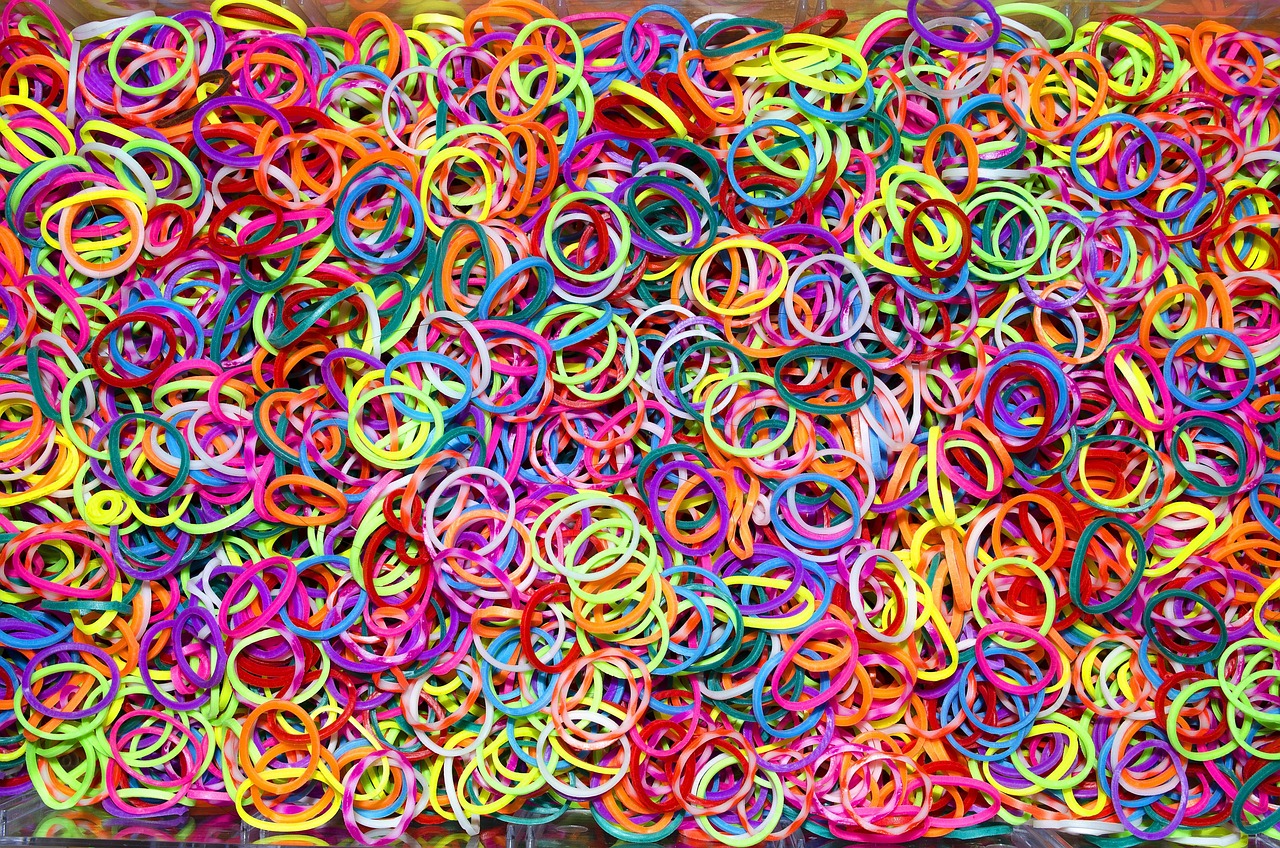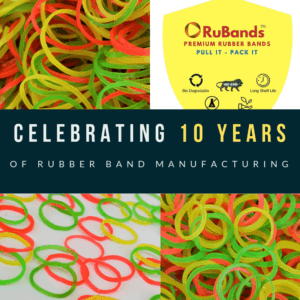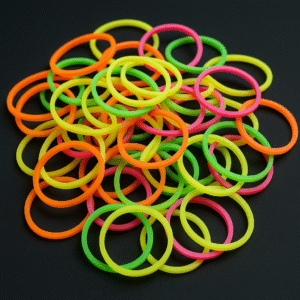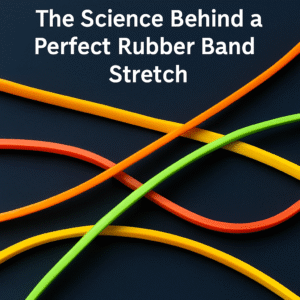A Guide to Choosing the Right Rubber Band for Your Needs
Ever had a rubber band snap at the worst possible moment? Perhaps it was holding together a critical stack of documents, bundling fresh produce, or securing an important package. That sudden snap is more than just an inconvenience; it can lead to disorganization, damaged goods, and even safety hazards. The simple truth is that not all rubber bands are created equal. They are specialized tools, engineered for specific tasks, environments, and stresses. This comprehensive rubber band guide is designed to walk you through the essential factors in choosing rubber bands, ensuring you select the perfect one for your needs every single time.
In a world of complex machinery and high-tech solutions, the humble rubber band remains an unsung hero of efficiency and organization. From bustling warehouses and sterile food processing plants to busy offices and creative classrooms, its applications are nearly limitless. However, this versatility is precisely why a one-size-fits-all approach doesn’t work. Using an office-grade band for heavy industrial tasks is a recipe for failure, just as using a non-food-grade band for packaging can compromise safety. At RuBands, we understand these nuances. We believe that equipping our customers with knowledge is just as important as providing them with high-quality products. This guide will empower you to look beyond the simple loop of elastic and see the science, material, and engineering that goes into making a reliable rubber band.
Why the ‘Right’ Rubber Band Matters More Than You Think
Selecting the appropriate rubber band isn’t about trivial preference; it’s a strategic decision that impacts efficiency, safety, and your bottom line. The consequences of a poor choice can ripple through your operations. Imagine a pallet of goods in a warehouse secured with bands that degrade under UV light from a nearby window, or a batch of fresh herbs bundled with bands that impart a chemical taste. These are not far-fetched scenarios; they are the real-world results of overlooking the importance of proper selection.
Here’s a breakdown of what’s at stake:
- Safety and Reliability: The most critical factor. A band that snaps under tension can become a projectile, posing a risk to employees. In packaging and logistics, a failed band can lead to spilled or damaged products during transit, affecting both your inventory and your reputation.
- Product Integrity: Certain applications, especially in the food and medical industries, require specific material properties. The wrong rubber band could leach chemicals, leave residue, or react poorly with the product it’s securing. Proper rubber band usage ensures the integrity of your own products.
- Operational Efficiency: Time is money. Using bands that are too tight requires extra effort to apply, slowing down packaging lines. Bands that are too loose fail to secure items properly, forcing workers to double-up or use alternative, more expensive materials. The right band streamlines workflow.
- Cost-Effectiveness: While it may be tempting to opt for the cheapest option, low-quality bands often have a shorter shelf life and lower durability. This leads to higher consumption rates and more frequent reordering. Investing in the correct, high-quality band from the start is a more economical long-term strategy.
Decoding the Materials: A Look at Different Types of Rubber Bands
The foundation of any great rubber band is its material. The composition determines its elasticity, strength, and resistance to environmental factors. Understanding the primary types of rubber bands available is the first step in making an informed choice.
Natural Rubber Bands
This is the most common material and the industry standard for a reason. Sourced from the latex of the Hevea brasiliensis tree, natural rubber offers an exceptional combination of strength and elasticity.
- High Tensile Strength: Natural rubber can be stretched to several times its original length before breaking, making it ideal for a wide range of general-purpose applications.
- Excellent Elasticity: It returns to its original shape effectively, providing a consistently snug hold.
- Biodegradable: As a natural product, it is more environmentally friendly than its synthetic counterparts, decomposing over time.
Best for: General office use, bundling mail and newspapers, light packaging, and everyday tasks. RuBands’ standard products are a prime example of premium, sustainably sourced natural rubber.
Synthetic Rubber Bands
Synthetic rubber is a broad category of artificial elastomers, each designed for specific, challenging conditions. These are the specialists of the rubber band world.
- EPDM (Ethylene Propylene Diene Monomer): These bands are champions of durability. They boast superior resistance to heat, UV rays, and extreme weather, making them perfect for outdoor rubber band usage.
- Silicone: Known for their stability across a wide range of temperatures (both hot and cold) and their non-toxic properties, silicone bands are often used in food-grade applications and medical settings.
- Fluorescent Bands: While often made from natural rubber, these bands contain special pigments that make them glow under UV light and appear incredibly bright in normal light. They are excellent for color-coding, sorting, and marketing purposes where high visibility is key.
Best for: Outdoor applications, industrial environments, food packaging (food-grade), and organizational systems that require color-coding.
The Sizing Conundrum: How to Measure for the Perfect Fit
Once you’ve identified the right material, the next crucial step in this rubber band guide is determining the correct size. An incorrectly sized band is just as ineffective as one made from the wrong material. Industrial rubber bands are typically measured in three ways:
- Flat Length: If you lay the rubber band flat, this is its length from end to end. It is half of the band’s circumference.
- Cut Width: This is the width of the band itself. A wider cut generally means a stronger band.
- Wall Thickness: This measures the thickness of the rubber, which also contributes to its overall strength and durability.
So, how do you figure out what size you need? A simple method is to measure the object or bundle you need to secure. Let’s say you want to wrap a band around the length of a rectangular box. You would measure the length of the path the band needs to travel. That measurement is the circumference. To find the required flat length, simply divide that circumference by two. For example, if your box requires a band to stretch around a 12-inch path, you would need a rubber band with a flat length of 6 inches. When in doubt, it’s always better to choose a band that is slightly smaller to ensure a secure hold. Many manufacturers, including RuBands, offer standardized sizing charts (e.g., #16, #33, #64) that correspond to specific dimensions, simplifying the process of choosing rubber bands for common tasks.
Application is Everything: Matching the Band to the Task
The final piece of the puzzle is the specific application. The environment and the task itself will dictate the ultimate choice. Here are some key questions to ask yourself:
- What is the environment? Will the band be exposed to sunlight, extreme temperatures, moisture, or chemicals? If so, a synthetic EPDM band might be necessary. For indoor, climate-controlled environments, natural rubber is perfect.
- What is the load? How much weight or tension does the band need to withstand? For securing heavy items or applications requiring high tension, look for bands with a wider cut and greater wall thickness.
- Is it for long-term storage or temporary use? For long-term storage, you need a band with excellent elasticity retention and durability, like those offered by RuBands, to prevent them from becoming brittle or sticky over time.
- Are there special requirements? Does the application involve food, medical supplies, or the need for high visibility? This will steer you towards specialized products like food-grade, latex-free, or fluorescent bands.
Conclusion: The RuBands Promise
Choosing rubber bands may seem like a minor detail, but as we’ve seen, it’s a decision with significant implications for the efficiency, safety, and quality of your work. By considering the core factors—material, size, and application—you can move from guesswork to a precise, informed choice. You no longer have to tolerate the frustration of a snapped, stretched-out, or inappropriate band. This rubber band guide is your first step toward mastering the selection process.
At RuBands, we are more than just manufacturers; we are partners in your success. Our extensive range of products, from all-purpose natural rubber bands to specialized synthetic solutions, is built on a foundation of quality, durability, and innovation. We are committed to providing not only a superior product but also the expertise to help you find the perfect match for your needs. Explore our product line or contact our team of experts today for a personalized recommendation. Make the right choice, choose RuBands.






